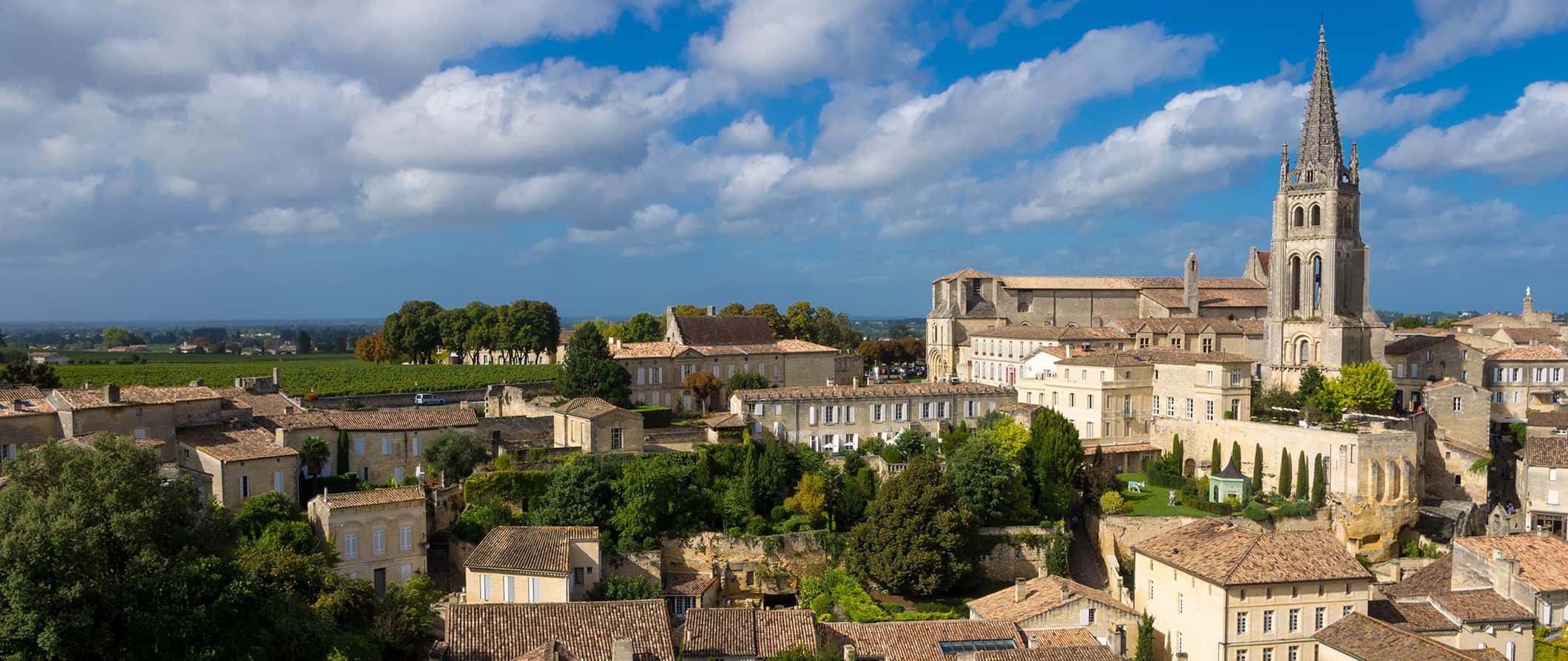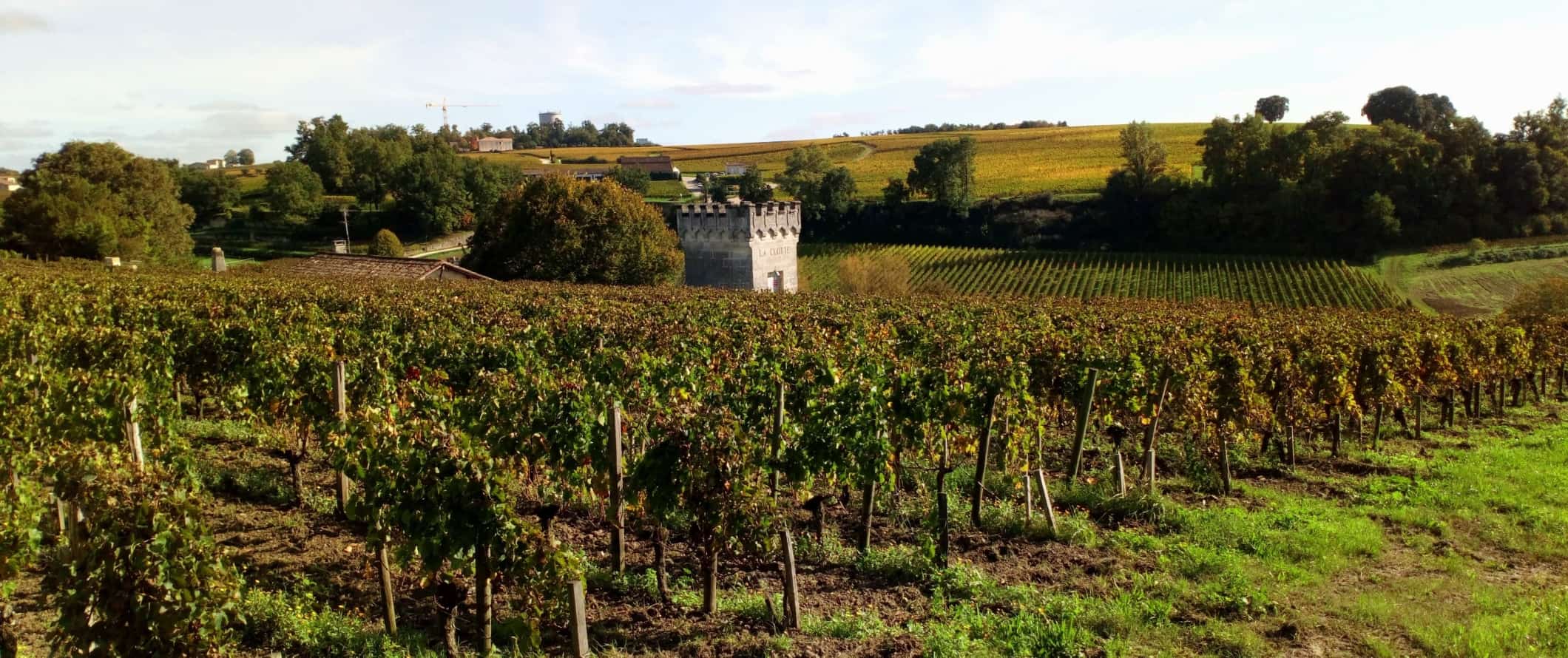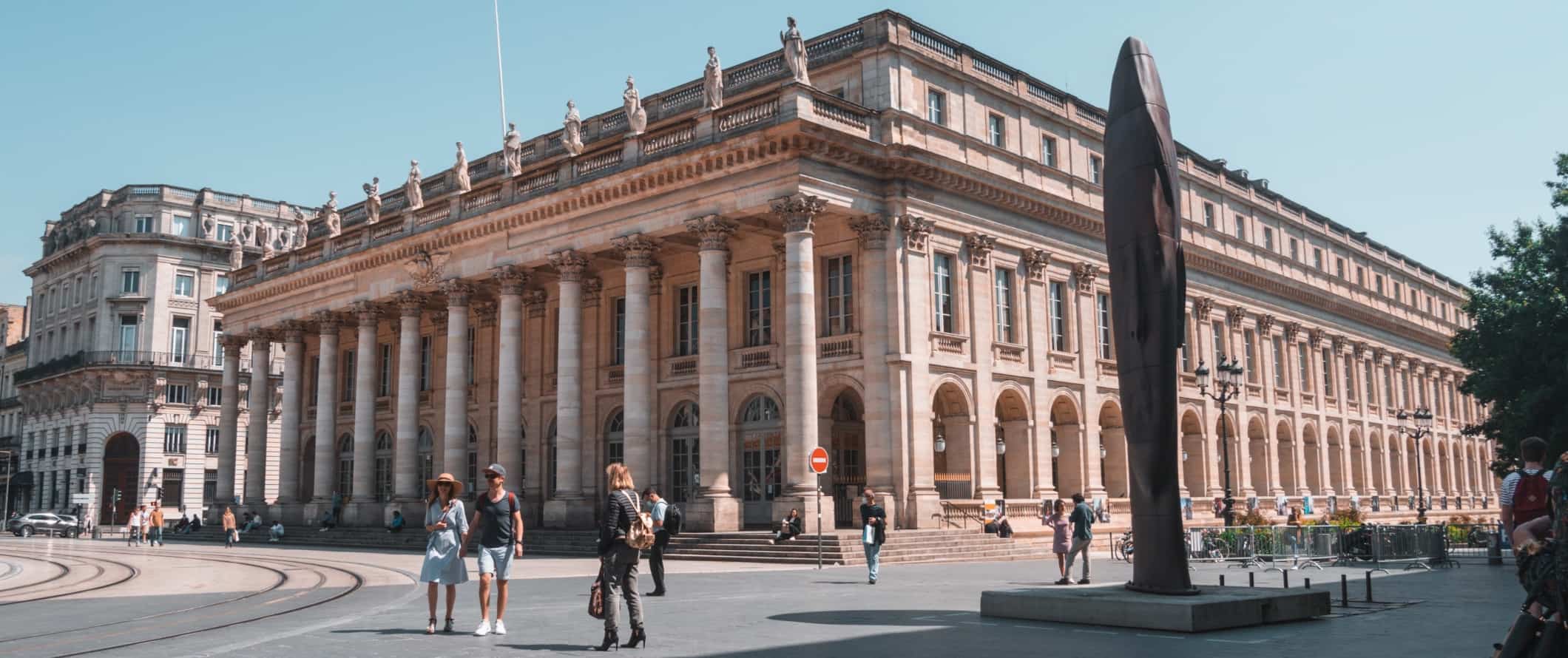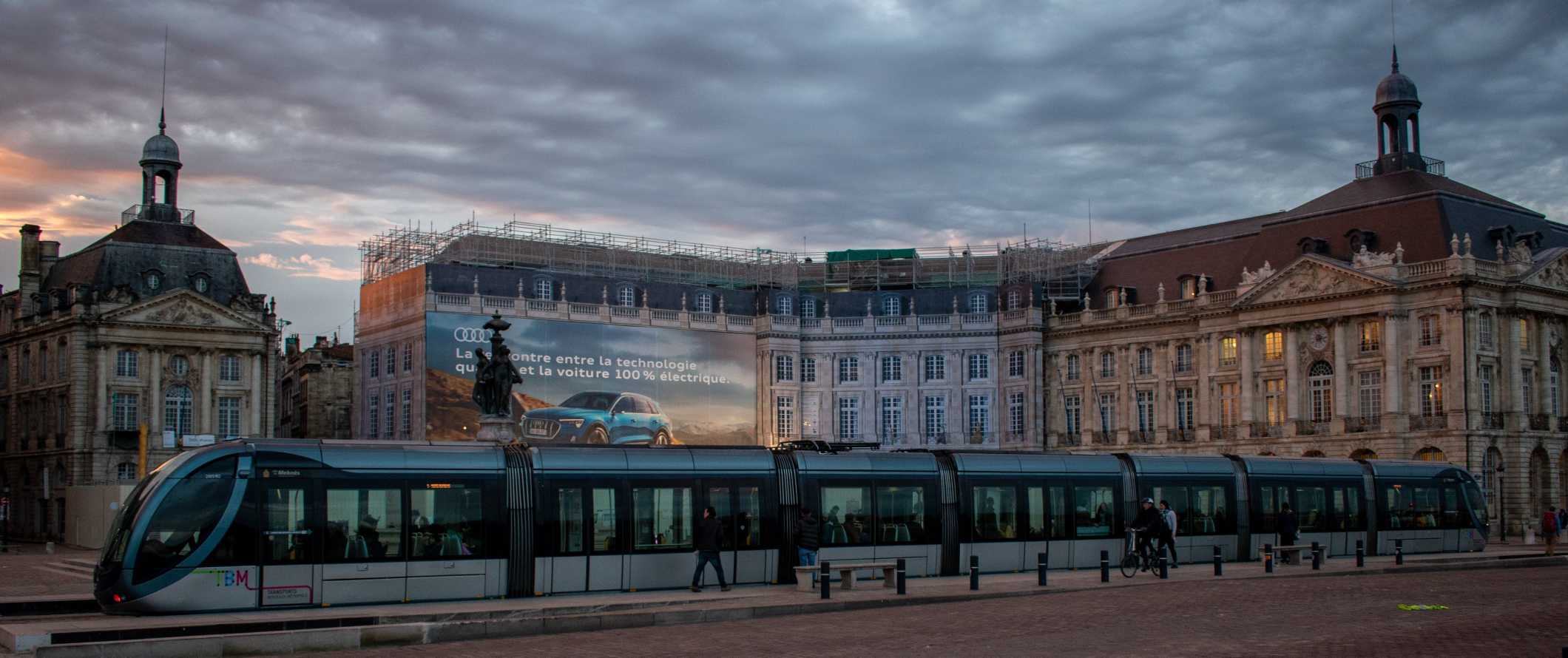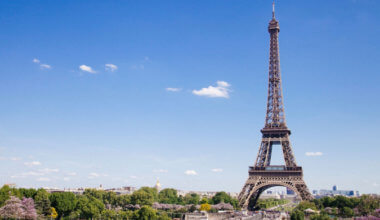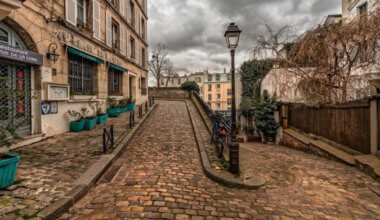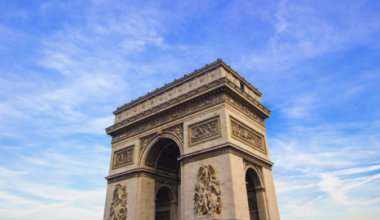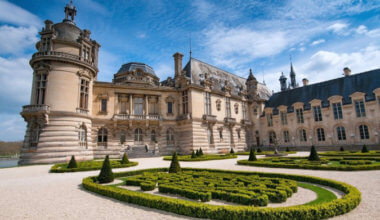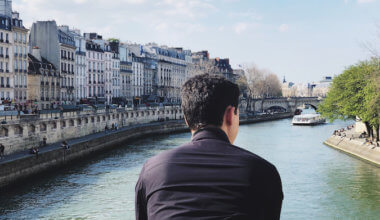Bordeaux, a small port city in southwestern France, is best known for being a wine lover’s paradise.
The historic center of Bordeaux is a UNESCO World Heritage site, thanks to its very intact 18th-century city architecture. It’s one of the most quintessentially French towns to explore, with medieval buildings, old watchtowers, winding streets, and iconic French architecture. It’s one of the best-preserved city centers in France.
Bordeaux is also an upscale place — a city for luxury shopping, drinking, and eating. It sits in the center of the world-famous wine region that bears its name and, thus, just like the Napa Valley in California or the Hunter in Australia, prices here reflect that reputation.
Even if you are not here for the wine, a visit to Bordeaux is still worth it as it’s a beautiful city with a lot of fun, historic, and outdoorsy things to do. It’s not popular on the backpacking France/budget travel trail (I mean it’s based around wine and no wine region is ever cheap) but over the last few years, a lot of cheap and free activities have popped up.
This travel guide to Bordeaux can help you plan your trip, save money, and make the most of your visit!
Table of Contents
Top 5 Things to See and Do in Bordeaux
1. Go on a wine tour
Take a full-day or half-day tour to sample the region’s offerings. Depending on the length of your tour, you’ll visit two to four wineries and sample wine at each stop. The cheapest tours start at 45 EUR and go up from there, with half-day tours generally costing around 75 EUR.
2. Wander through Saint Emilion
This village has a strong connection to red wine production, and vineyards have existed here since the Roman Empire. Even if you aren’t on an organized wine tour, a visit to this village and an afternoon walking through its streets can be a peaceful way to spend a day. It’s beautiful and close to Bordeaux.
3. Day trip to Dune de Pyla
This sand dune is located an hour outside Bordeaux in Pyla Sur Mer, a resort town where many of France’s well-to-do spend the summer. It’s the largest sand dune in Europe and the result of winds eroding one shore of the bay and blowing sand over.
4. Visit La Cité du Vin
The new La Cité du Vin (City of Wine) Museum takes visitors through a fun, interactive tour of wine world history from 6,000 BCE to the present day. You’ll learn how and where wine is made and how the global trade ties in with Bordeaux. Get a glass of wine at the rooftop wine bar. Tickets are 20 EUR.
5. Musée des Beaux-Arts
This museum is housed inside two wings of the 18th-century Hôtel de Ville. Some of the main work featured includes pieces by French, Flemish, Italian, and Dutch artists of the 17th century, with masterpieces from Delacroix, Picasso, and Renoir. It costs 5 EUR to visit.
Other Things to See and Do in Bordeaux
1. Stroll Rue Sainte-Catherine
For the walkers and the shoppers, this pedestrian shopping street stretches 1.6 kilometers (1 mile), making it the longest shopping street in Europe. The northern part of the street is filled with French chains, while the southern part has more local shops and restaurants. A lot of students hang out here as well, especially on Saturdays.
2. Explore Old Town Bordeaux
One of the largest 18th-century architectural urban areas in all of Europe, Bordeaux’s Old Town is now a UNESCO World Heritage Site thanks to its amazing preservation. Two famous attractions are the Grand Théâtre, an opera house built in 1780, and the Cathédrale Saint-André de Bordeaux, built between the 12th and the 14th century.
3. Visit the other wine museum
In addition to La Cité du Vin, Bordeaux has another wine museum that dives deep into local history. Le Musée du Vin et du Négoce (The Bordeaux Wine and Trade Museum) exhibits the history of the city’s wine merchants. Admission is 10 EUR and includes two tastings. You can also take a wine workshop here to learn about choosing wine, grape varieties, and different Bordeaux wines. Workshops are 40 EUR.
4. See the Musee D’Art Contemporain (CAPC)
If you love modern art, visit this museum. Located in a 19th-century warehouse, the museum has permanent works from renowned artists and photographers like Richard Long, Keith Haring, and Georges Rousse. On Saturdays and Sundays at 4pm, you can take a guided tour for 1 EUR in addition to the price of admission. It costs 7 EUR for the permanent collection and temporary exhibits (5 EUR if there are no temporary exhibits). The museum is closed on Mondays.
5. Walk around Les Quais
The Quays of Bordeaux follow the shores of the Garonne. The platforms here used to be a harbor but have been renovated for visitors to walk, rollerblade, or bike along. This 4.5-kilometer (2.8-mile) stretch is a scenic place to walk with some amazing views of the landscape and the unique Aquitaine bridges. This is also a popular nightlife and club area.
6. Visit the Water Mirror
Bordeaux’s Water Mirror (Miroir d’eau) is a giant reflecting pool in front of the Place de la Bourse. It’s made up of thin granite slabs covered in just two centimeters of water, covering over 37,000 square feet, making it the largest in the world! In the summer, mist is created from vents hidden in the granite.
7. See the Jardin Botanique
This big park north of the center is the city’s large public garden, spanning just over 1 acre. There are a ton of walking paths and places to bird-watch, or you can sit around on a nice day and have a picnic. There are guided tours for those looking to learn about all flowers in the garden. Admission is free.
8. Shop at the Marché des Capucins
This is Bordeaux’s central covered market, with stalls of bakers, produce sellers, cheesemongers, wine merchants, florists, and more. The market is open every day except Mondays, from 5:30am-2pm. It’s a great place to stock up on provisions for a picnic lunch. There are also cafes and restaurants inside.
9. Learn local history at Musée d’Aquitaine
With over 70,000 pieces in their collection, this museum focuses on the history of the region from prehistory to the present day. Newer additions to the permanent collection include an exhibit on Bordeaux’s maritime history and the city’s role in the slave trade. Admission is 5 EUR with free entry on the first Sunday of the month (except July and August).
10. Ascend the medieval tower
Built in 1494, Porte Cailhau is a beautiful defensive gate to the city. You can climb the tower to get views over the waterfront as well as learn more at the small exhibition inside the tower. Admission is 5 EUR. Even if you don’t pay to go inside, it’s worth walking by, especially at night when it’s all lit up.
For more information on other cities in France, check out these guides:
Bordeaux Travel Costs
Hostel prices – Hostel dorms with 4-6-beds cost 31-35 EUR while dorms with 8-10 beds run about 28-31 EUR a night. Private rooms start at 65 EUR. Free Wi-Fi is standard though no hostels offer free breakfast or self-catering facilities.
For those traveling with a tent, camping is available outside the city. A basic plot for two people without electricity costs around 24 EUR per night. Wild camping is illegal in France.
Budget hotel prices – Budget hotels cost around 70 EUR per night. Expect basic amenities like free Wi-Fi, AC, TV, and sometimes free breakfast.
On Airbnb, private rooms start around 35 EUR, while the price for a full apartment starts at 75 EUR per night (though they average closer to 125 EUR).
Food – Food in France has a long history and is intricately intertwined with the culture at large. Fresh bread, tasty local cheeses, and plentiful wine may be stereotypical staples of the cuisine, but they really are some of the go-to foods in the country. Wine is especially popular in this region, often paired with common dishes like lamb and fresh fish from the Bay of Biscay. The region is also known for its popular (but somewhat controversial) foie gras, a fattened duck or goose liver. Pâté and slow-roasted meats (confits) are also traditional regional fare.
Personally, I think Bordeaux has some of the best food in France. While it’s a great region to splash out on food, you can also get by on a budget here. Cheap sandwiches cost about 6 EUR and most lunch specials cost 10-15 EUR. Fast food (think burger and fries) costs around 9 EUR for a combo meal.
If you want to indulge a little, a main dish at dinner costs around 15-30 EUR.
A glass of wine costs around 7 EUR and a cappuccino costs around 3.50 EUR. Beer is 5-6 EUR.
My two favorite restaurants are La Tupina and Le Petit Commerce. Be sure to eat at L’étoile for lunch and say hello to the chef, Clelia. She and I backpacked Thailand together years ago. Her food is delicious!
You can also pick up some ingredients and have a picnic in the park by stopping at one of the many breads, cheese, and meat shops/markets throughout the city. Groceries cost around 45 EUR per week for basic staples like pasta, rice, bread, seasonal produce, and some meat.
Backpacking Bordeaux Suggested Budgets
If you’re backpacking Bordeaux, my suggested budget is 70 EUR per day. This covers staying in a hostel dorm, cooking all of your meals, taking public transit to get around, limiting your drinking, and sticking to mostly free and cheap activities like free walking tours and enjoying the city’s parks.
A mid-range budget of 135 EUR per day covers a private Airbnb room, eating out for most meals at cheap restaurants, enjoying a few glasses of wine, taking the occasional taxi, and doing paid tours and activities like museum visits and a wine tour.
On a “luxury” budget of 255 EUR or more per day, you can stay in a hotel, eat out for all your meals, enjoy plenty of wine, rent a car and do some day trips, and tour more wineries and vineyards. This is just the ground floor for luxury though. The sky is the limit!
Bordeaux Travel Guide: Money-Saving Tips
Bordeaux is built for luxury travel so you’ll have a hard time not spending a lot here. It’s just the nature of the city — especially if you want to dine out. However, if you want to cut your costs, here are some ways to save money in Bordeaux:
- Explore on foot – Walking around Bordeaux is a great way to experience the architecture and the city vibes. The city is easily walkable and there’s no reason to take public transportation.
- Drink the cheap wine – Grab a cheap bottle of Bordeaux from one of their numerous wine shops on the street and have a glass while walking around to see monuments and historic buildings. You can find good bottles for as little as 5 EUR.
- Take advantage of discount museum prices – Pick up a City Pass for free public transportation, free entry to 20 museums, and your choice of a guided city tour. A one-day pass is 29 EUR, a two-day pass costs 39 EUR and a three-day pass costs 43 EUR. You also get discounts on other attractions (including wine tours and dinner cruises).
- Take a free walking tour – If you want to learn more about the city, a free walking tour is a great place to start. You’ll learn about the history and architecture while touring all the major sights. Free Walking Tours Bordeaux is the best one. Just don’t forget to tip your guide!
- Stay with a local – If you want to save money and get some local insight into the city, use Couchsurfing. With accommodation prices so expensive in the city, I highly suggest trying to find a host that can give you a bed and show you around. This city is not cheap and having a local guide goes a long way!
- Bring a water bottle – The tap water here is safe to drink so bring a reusable water bottle to save money and reduce your plastic use. LifeStraw is my go-to brand as their bottles have built-in filters to ensure your water is always clean and safe.
Where to Stay in Bordeaux
There are only a few hostels in Bordeaux so budget options are limited. Here are my suggested places to stay in Bordeaux:
How to Get Around Bordeaux
Public transportation – Bordeaux is very walkable and has a large pedestrian zone so you can walk around the city easily. The city also has an extensive public transportation system if you are going far or don’t want to walk.
The bus and tram network are both run by TBM, and the central station is at Espace des Quinconces. Buses and trams take you everywhere you need to go. A single ticket costs 1.70 EUR, a 10-journey pass costs 13.70 EUR, and an unlimited day pass is 4.70 EUR. Tickets are rechargeable.
If you need to transfer from a bus to a tram, you need to pick up a two-journey ticket for 3 EUR. All tickets are valid for one hour.
If you get a City Pass tourism card, you’ll be able to ride the public transit for free. A one-day pass is 29 EUR, a two-day pass costs 39 EUR and a three-day pass costs 43 EUR.
There is also a bus that runs from the airport to the city center that leaves every 10 minutes between 6am-11pm. Tickets cost 8 EUR.
Ferry – TBM also operates a river ferry service between Lormont and Bordeaux, with stops in Stalingrad (Parlier), Quinconces (Jean Jaurès), and Lormont Bas. Ticket prices are the same as the bus and tram ticket prices.
Bicycle – V3 is the public bike-sharing system that lets you use bicycles around the city once you register online. It costs 1.70 EUR to rent a bike for a day, plus 2 EUR per hour after the first 30 minutes.
Taxi – Taxis are expensive in Bordeaux, with a base rate of 2 EUR plus about 1.66 EUR per kilometer. Prices add up fast so skip the taxis if you can. Public transportation can get you anywhere you need to go.
Ridesharing – Uber is available in Bordeaux and is generally a bit cheaper than taxis.
Car Rental – Car rentals can be found for around 35 EUR per day for a multi-day rental. Unless you’re planning to head out of the city, I would skip the car rental. Parking is expensive and you don’t need a car to get around the city.
When to Go to Bordeaux
If you’re traveling to Bordeaux specifically for the wine, timing is everything. The months between June and August are the best time for exploring the vineyards. Temperatures are hottest in July and August, with average highs around 27°C (80°F). This is also the busiest time of year so book your accommodation in advance. Much of France goes on holiday in August as well, so some businesses may have limited hours during this time.
The harvest season starts in September, which means that some wineries are closed to visitors (but not all). If there’s a particular winery you want to visit, do your research beforehand. September and October are still warm, with an average high temperature of 24°C (75°F).
If you want lower rates and fewer crowds, spring and autumn are great times to visit. The Christmas season, although chilly, is also an excellent time to explore the markets and festivities. Expect daily temperatures to hover around 7°C (45°F) in the winter.
How to Stay Safe in Bordeaux
Bordeaux is very safe. People are generally friendly and helpful, and you’re unlikely to experience violent crime here. Like any destination, avoid walking through unfamiliar areas alone at night and beware of pick-pocketing and petty theft. Pickpocketing is most common around the train station and Marche des Capucins so always keep your valuables secure and out of reach.
Solo female travelers should feel comfortable here, though the standard precautions apply (never leave your drink unattended at the bar, never walk home alone if intoxicated, etc.)
Scams here are rare, but if you’re worried about getting ripped off you can read about common travel scams to avoid here.
If you experience an emergency, dial 112 for assistance.
Always trust your gut instinct. Avoid isolated areas at night and be aware of your surroundings at all times. Make copies of your personal documents, including your passport and ID.
The most important piece of advice I can offer is to purchase good travel insurance. Travel insurance will protect you against illness, injury, theft, and cancellations. It’s comprehensive protection in case anything goes wrong. I never go on a trip without it as I’ve had to use it many times in the past.
Bordeaux Travel Guide: The Best Booking Resources
These are my favorite companies to use when I travel. They consistently have the best deals, offer world-class customer service and great value, and overall, are better than their competitors. They are the companies I use the most and are always the starting point in my search for travel deals.
- Skyscanner – Skyscanner is my favorite flight search engine. They search small websites and budget airlines that larger search sites tend to miss. They are hands down the number one place to start.
- Hostelworld – This is the best hostel accommodation site out there with the largest inventory, best search interface, and widest availability.
- Booking.com – The best all around booking site that constantly provides the cheapest and lowest rates. They have the widest selection of budget accommodation. In all my tests, they’ve always had the cheapest rates out of all the booking websites.
- Get Your Guide – Get Your Guide is a huge online marketplace for tours and excursions. They have tons of tour options available in cities all around the world, including everything from cooking classes, walking tours, street art lessons, and more!
- SafetyWing – Safety Wing offers convenient and affordable plans tailored to digital nomads and long-term travelers. They have cheap monthly plans, great customer service, and an easy-to-use claims process that makes it perfect for those on the road.
- LifeStraw – My go-to company for reusable water bottles with built-in filters so you can ensure your drinking water is always clean and safe.
- Unbound Merino – They make lightweight, durable, easy-to-clean travel clothing.
- Top Travel Credit Cards – Points are the best way to cut down travel expenses. Here’s my favorite point earning credit cards so you can get free travel!
- BlaBlaCar – BlaBlaCar is a ridesharing website that lets you share rides with vetted local drivers by pitching in for gas. You simply request a seat, they approve, and off you go! It’s a cheaper and more interesting way to travel than by bus or train!
Bordeaux Travel Guide: Related Articles
Want more info? Check out all the articles I’ve written on backpacking/traveling France and continue planning your trip:
